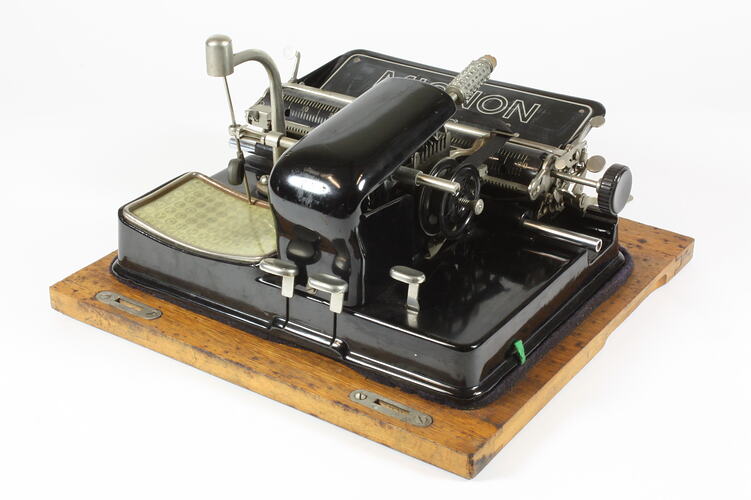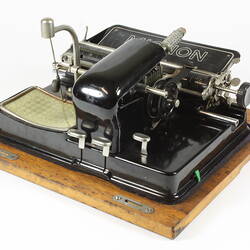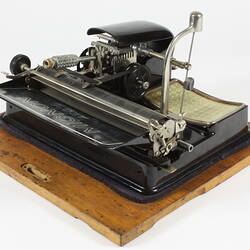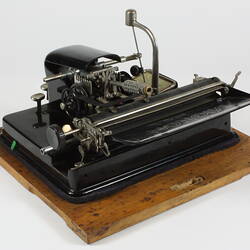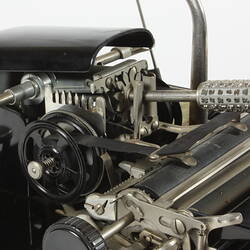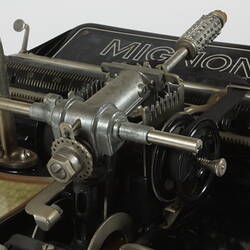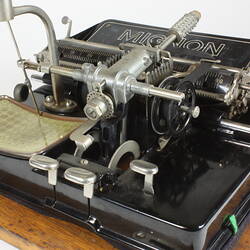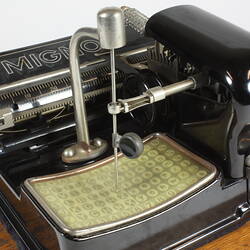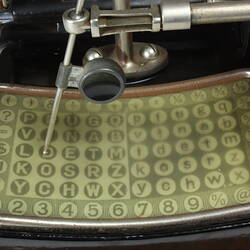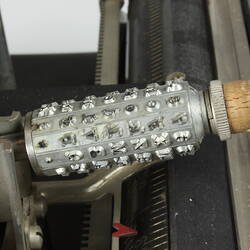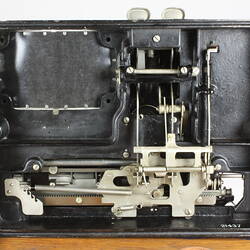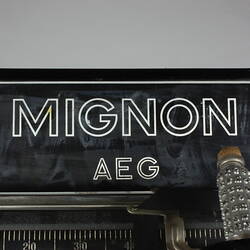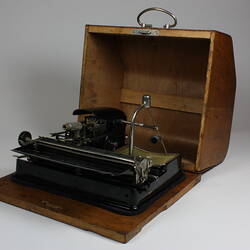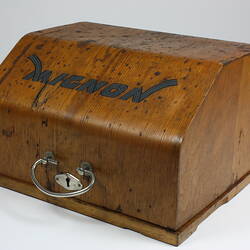Summary
Typewriter of the type-sleeve index class, manufactured by the Allgemeine Electrizitats Gesellschaft (AEG) of Berlin, Germany. The machine was developed by AEG in 1901-1902 based on a 1901 patent by Louis Sell of Berlin. The Model 4 entered production in 1924. The Mignon remained in production in various models up to the 1930s.
In operation, a pointer is moved across a curved rectangular character index to select the desired character. As the pointer is moved so the type-sleeve is rotated and shifted to bring the selected character to the printing point. The printing key (middle key of the three at front of machine) is then depressed, forcing the character and the ink ribbon on to the paper. The left-hand key is the space key and the right-hand key is the backspace key.
Typing speeds of up to 300 characters per minute were reportedly possible. Type sleeves and character indexes could be changed to accommodate different languages or special character sets.
Physical Description
Metal frame with plated metal components. Metal cylindrical type sleeve with seven rows of characters. Curved rectangular index plate with characters laid out in rows and columns. Uppercase letters on left, lowercase letters on right, other characters arranged around periphery of index. Typewriter sits on wooden baseboard to which is fitted a wooden cover.
More Information
-
Collecting Areas
-
Acquisition Information
Purchase
-
Manufacturer
-
Inscriptions
On paper support: 'MIGNON / AEG' Serial number engraved below carriage: '293484' On top of wooden cover: 'MIGNON'
-
Classification
-
Category
-
Discipline
-
Type of item
-
Overall Dimensions
352 mm (Width), 340 mm (Depth), 220 mm (Height)
DImensions with cover in place.
-
Overall Dimensions
305 mm (Width), 310 mm (Depth), 185 mm (Height)
Dimensions with cover removed.
-
References
The Classic Typewriter Page: [Link 1] (accessed 6 April 2011) The Virtual typewriter Museum: [Link 2] (accessed 6 April 2011)
-
Keywords
